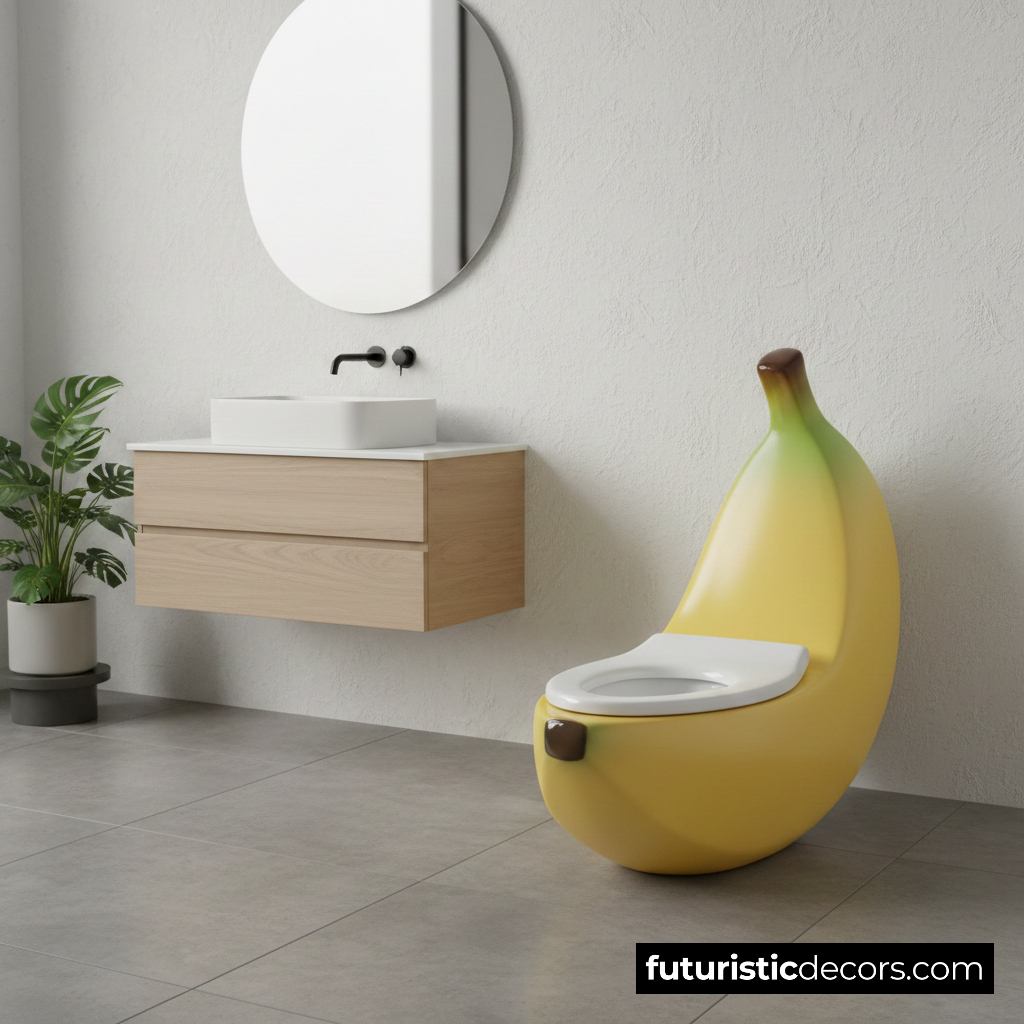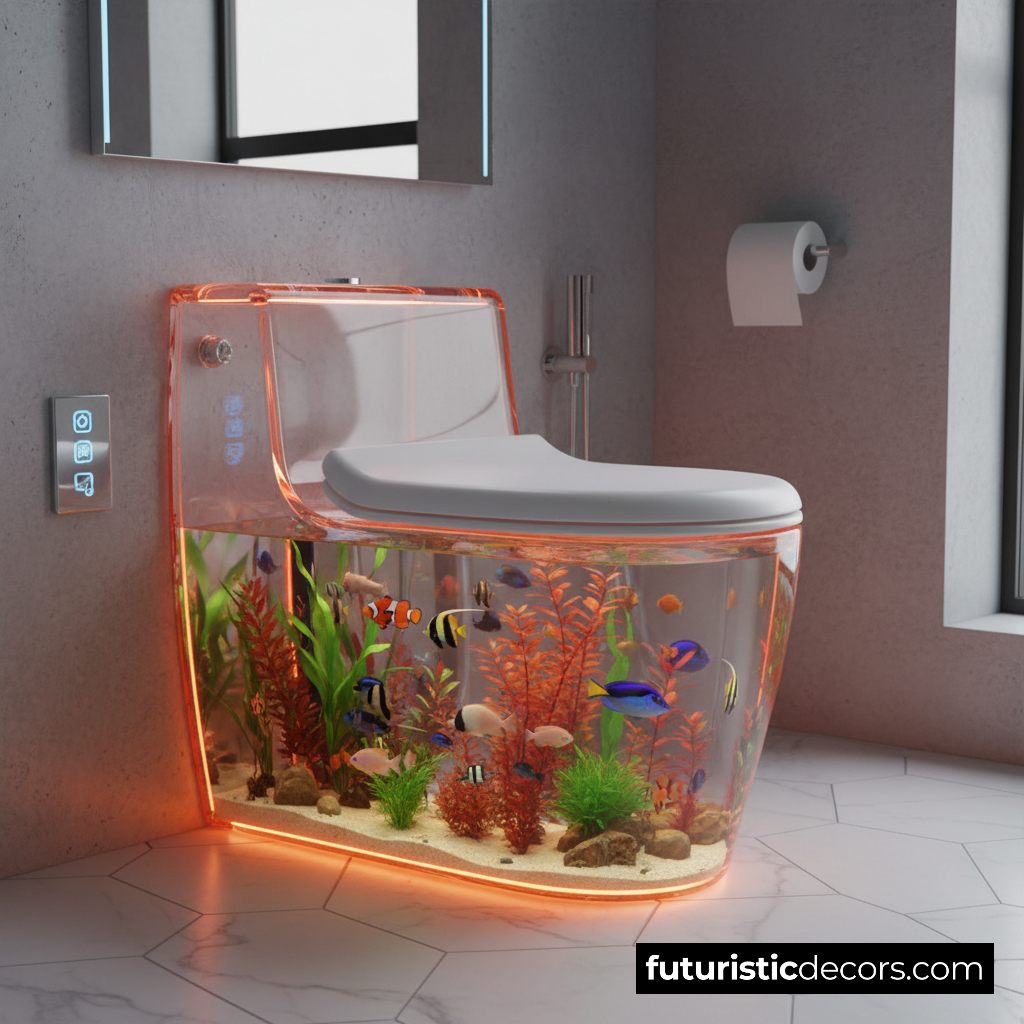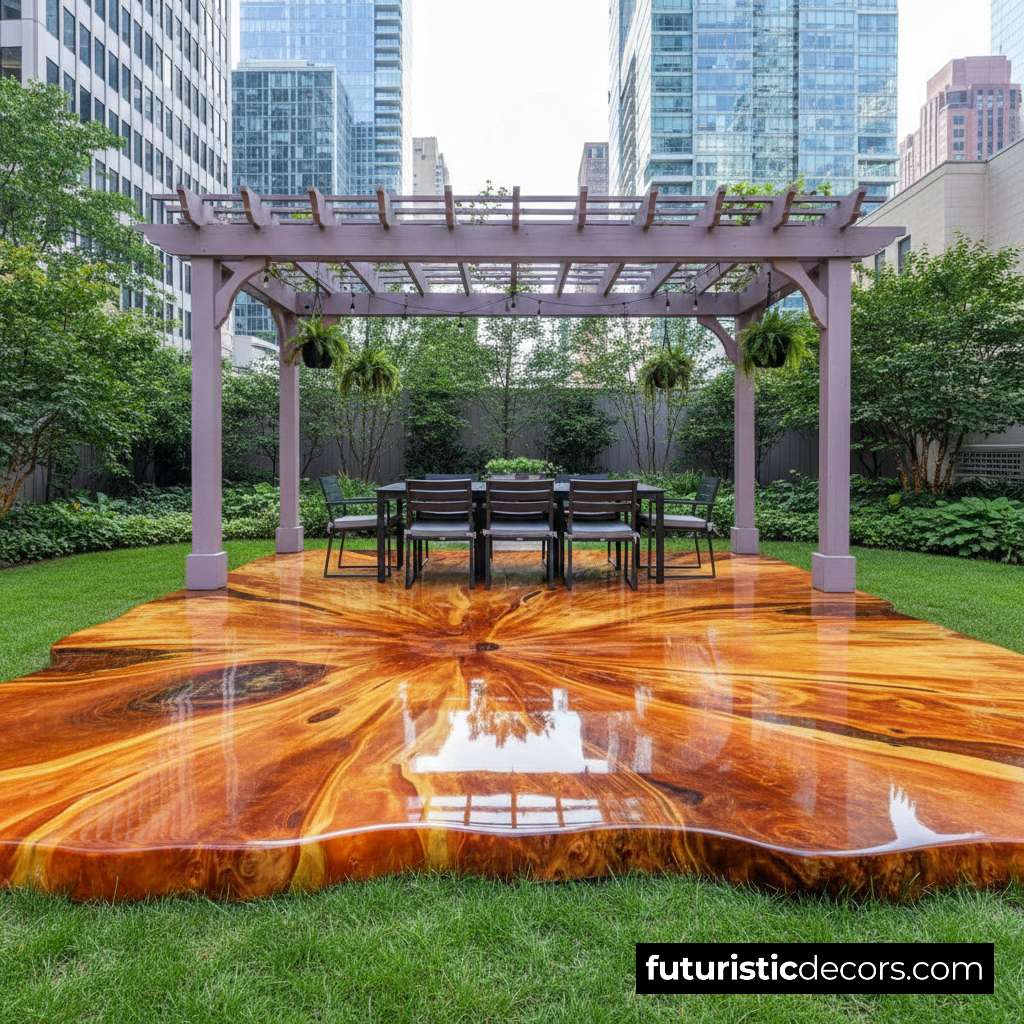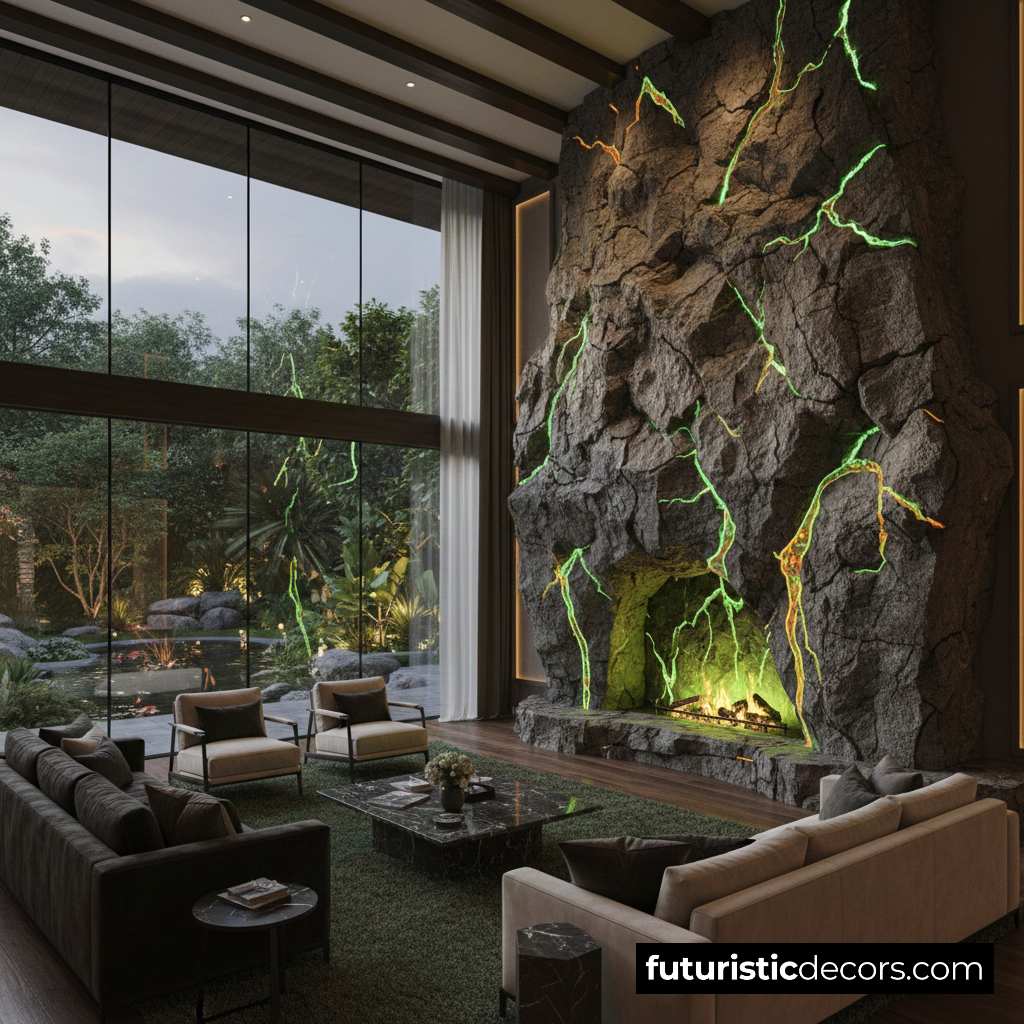In modern interior design, the bathroom has emerged as a sanctuary for self‑care and personal expression. Gone are the days when sinks were merely functional fixtures; today, they can become stunning focal points that resonate with the homeowner’s individual style and connection to nature. One of the most compelling trends is the gorgeous nature sink, a custom‑carved masterpiece that transforms ordinary stone, wood, or composite countertops into living landscapes. Whether inspired by misty mountain ranges, dense forest canopies, or serene ocean waves, these sinks fuse artistry and utility to reflect deeply personal stories.
In this article, we’ll delve into the world of custom carving for sinks, exploring techniques, materials, thematic inspirations, and practical considerations. From selecting the perfect base material to collaborating with skilled artisans, you’ll discover how to craft a gorgeous nature sink that not only elevates your bathroom’s aesthetic but also evokes the tranquility and beauty of the natural world.
The Appeal of a Custom‑Carved Sink
A standard sink may meet practical needs, but a custom‑carved design offers an emotional and sensory experience. Each curve and contour in a nature‑inspired carving tells a story—of waterfalls cascading into hidden pools, of rugged cliffs carved by time, or of delicate petals unfurling. This personal narrative makes a gorgeous nature sink more than a fixture; it becomes a conversation piece and a daily ritual, reminding users of cherished memories or dream destinations.

Moreover, the tactile quality of hand‑carved surfaces adds a layer of depth and authenticity. While mass‑produced sinks often rely on uniform molds, custom carving embraces imperfections—gentle asymmetries and subtle tool marks—that convey the human touch. These nuances draw the eye and invite touch, strengthening the connection between owner and environment.
Choosing the Right Base Material: Gorgeous Nature Sink
Selecting an appropriate base material is the foundation of any successful carved sink. Each option offers distinct aesthetic and functional properties:
Natural Stone (Marble, Granite, Soapstone): Renowned for durability and timeless elegance, stone sinks can be carved to showcase rich veining and intricate relief patterns. Marble lends a luxurious feel, while soapstone’s matte finish evokes organic warmth.
Engineered Quartz: Combining crushed stone with resin binders, engineered quartz provides consistent coloration and strength. Its workability allows for precise carvings without the brittleness of pure stone.
Solid Wood (Teak, Walnut): Wooden sinks bring unparalleled warmth and character. Teak’s water resistance makes it ideal; walnut offers deep, chocolatey tones. Careful sealing is essential to prevent moisture damage.
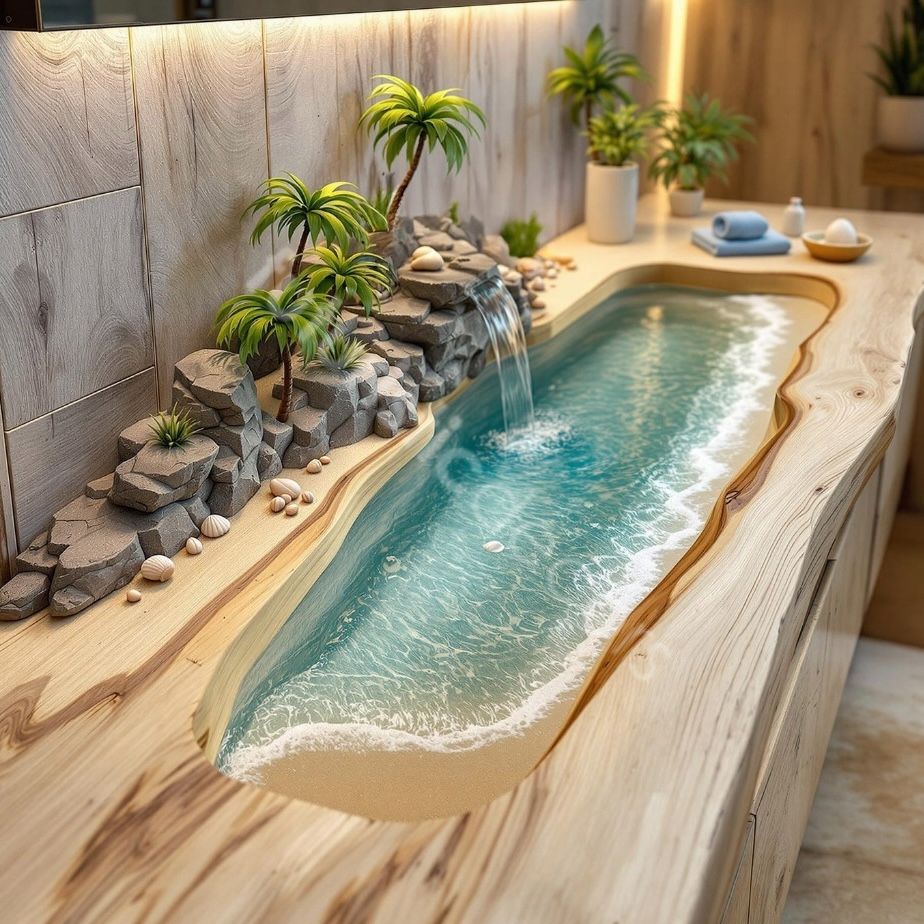
Cement and Micro‑Cement: These modern composites allow for sculptural freedom and a minimalistic aesthetic. Custom pigments can infuse earthy hues, simulating clay or sandstone.
Considerations such as water exposure, cleaning routines, and overall bathroom climate should guide your choice. A gorgeous nature sink built from an ill‑suited material can quickly lose its allure if prone to staining or warping.
Carving Techniques Explained: Gorgeous Nature Sinks
The artistry of a custom sink lies in the carving technique. Three primary methods dominate:
Bas‑Relief Carving: Shallow relief that merges seamlessly with the sink’s plane. Ideal for delicate floral motifs or subtle contouring of waves and dunes.
High Relief and Intaglio: Deep cuts that create pronounced figures rising above or sinking below the surface. Perfect for dramatic mountain ranges or pronounced animal silhouettes.
Undercutting: Removing material beneath an element to create the illusion of depth and shadow. Effective for waterfall edges or overhanging branches.
Artisans may combine techniques to achieve layered complexity—a series of bas‑relief foliage in the foreground, for instance, with high relief rock faces behind.
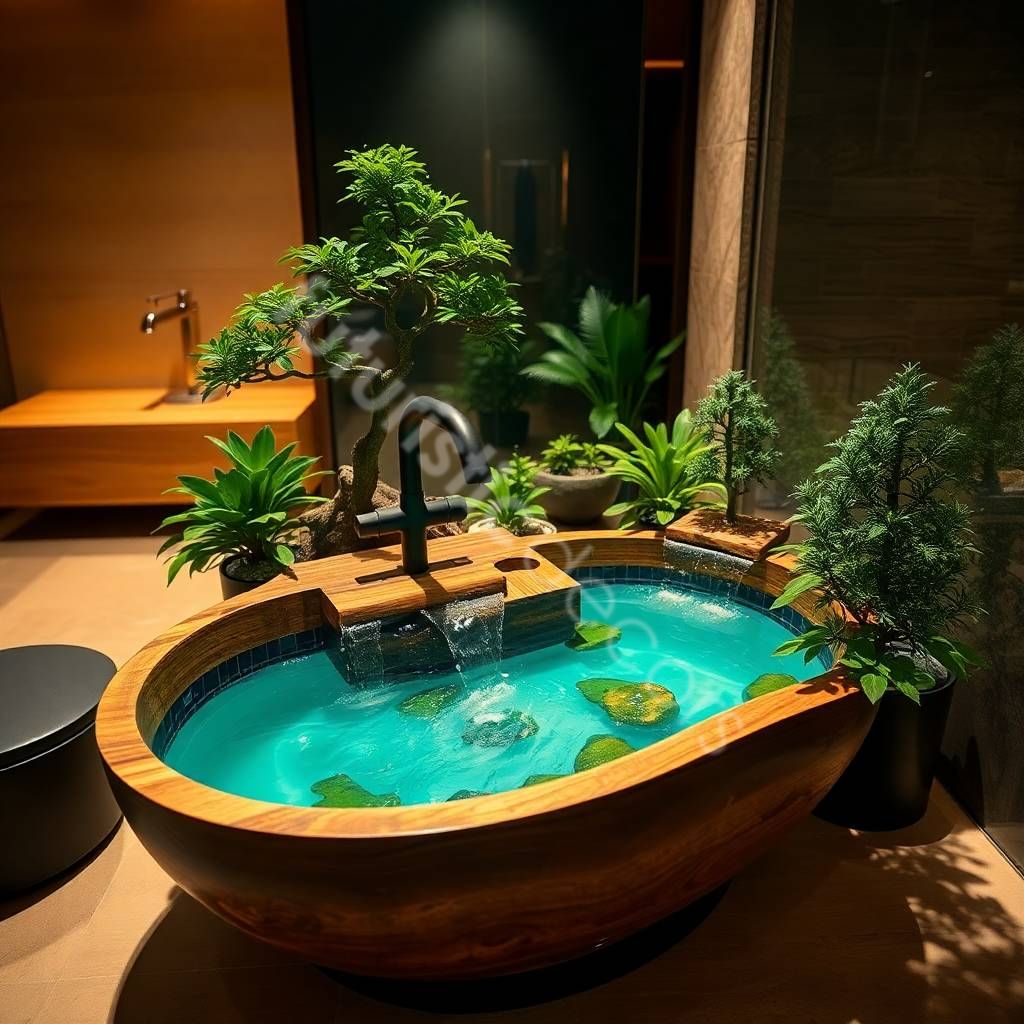
Defining Your Personal Landscape Theme
Before sketching begins, identify the landscape that resonates most deeply. Common inspirations include:
- Mountain Vistas: Jagged peaks, winding trails, and alpine flora.
- Forest Retreats: Towering pines, ferns, and dappled light through leaves.
- Oceanic Scenes: Rolling waves, coral reefs, and drifting seaweed.
- Desert Dunes: Undulating sands, cacti silhouettes, and starlit skies.
- Tropical Paradises: Palm fronds, hibiscus blooms, and radiant sunsets.
Envision the elements you wish to highlight. Perhaps a favorite hiking trail’s rocky outcrop or a childhood lake’s shoreline. Document images, sketches, and color swatches to convey your vision precisely.
Mountain‑Inspired Carving Ideas
A mountain‑themed gorgeous nature sink captures the rugged majesty of high altitudes:
Summit Silhouette Rim: Carve the sink’s outer rim to mimic a jagged skyline. Peaks rise in relief, framing the basin like a natural amphitheater.
Stream and Ravine Details: Use fine chisels to sculpt miniature ravines with tiny channels guiding water along carved streams—turning everyday use into a journey through mountain creeks.
Alpine Flora Accents: Integrate small relief motifs of edelweiss, alpine grasses, and dwarf pines along ledges to soften hard stone and introduce organic variety.
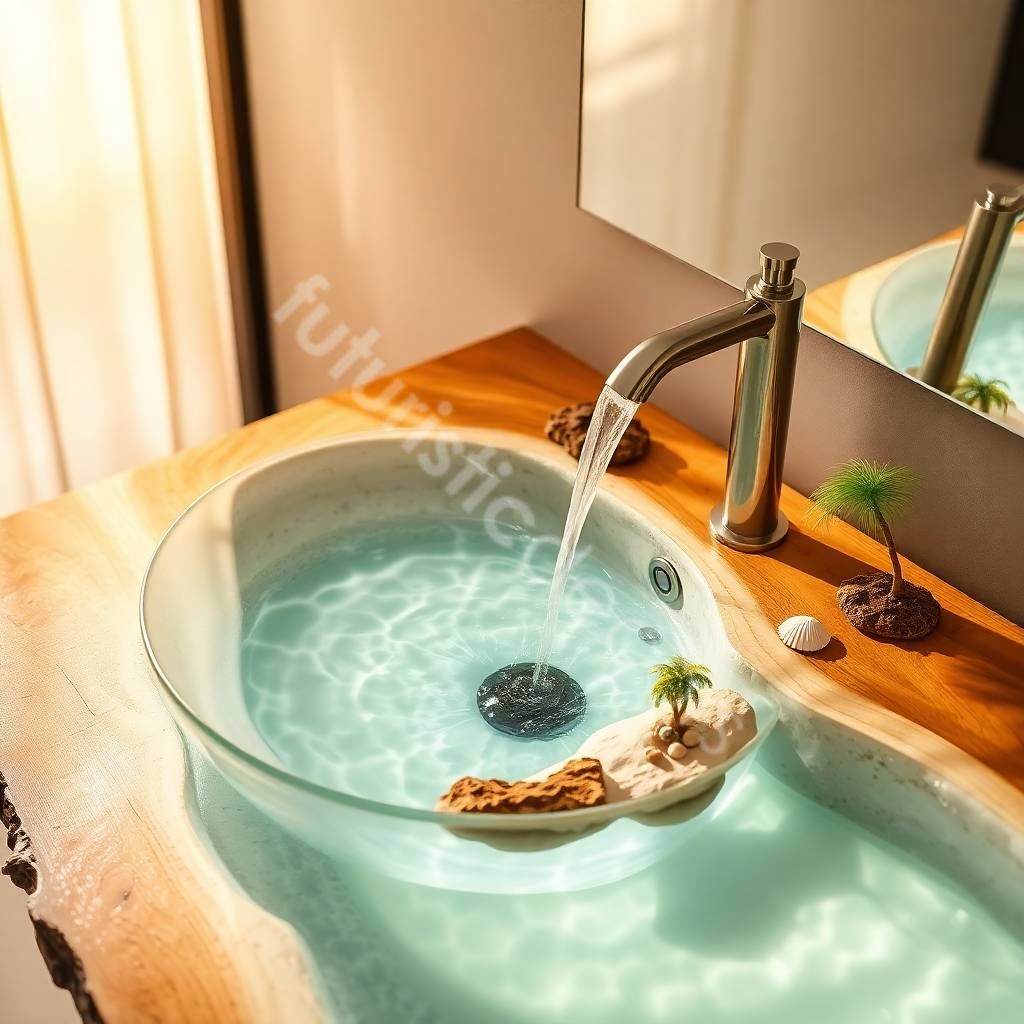
By combining high relief for peaks and bas‑relief for foliage, the final result evokes a three‑dimensional vista tailored to your chosen elevation.
Forest Retreat Themes: Gorgeous Nature Sink
Forests symbolize quiet reflection and renewal. For a wood‑inspired or stone sink:
Tree Ring Inlay: In wood sinks, integrate live edge slices into the basin floor, showcasing concentric rings as nature’s timekeepers.
Canopy Overhang: Carve interlocking branches and leaves around the faucet area, creating a “living canopy” that spills water like rain through leaves.
Forest Floor Texture: Use stippling techniques on the sink’s outer walls to mimic moss, leaf litter, and granular soil textures.
This immersive design transforms a morning handwash into an intimate stroll beneath towering trunks.
Oceanic Inspirations
Water-themed sinks celebrate the medium itself:
Wave Crest Basins: Sculpt the basin’s interior edge into curling waves. As water pools, it reflects the fluid curves—dancing light across carved surfaces.
Coral Reef Relief: Bas‑relief carvings of coral branches, starfish, and seashells adorn the countertop around the sink. Pair with tinted resin inlays for a “wet” coloration effect.
Tide Pool Accents: Embed small polished gemstone pebbles in carved hollows to simulate tide pools glinting with hidden treasures.
Choosing cool blue pigments or translucent inlays enhances the aquatic illusion.
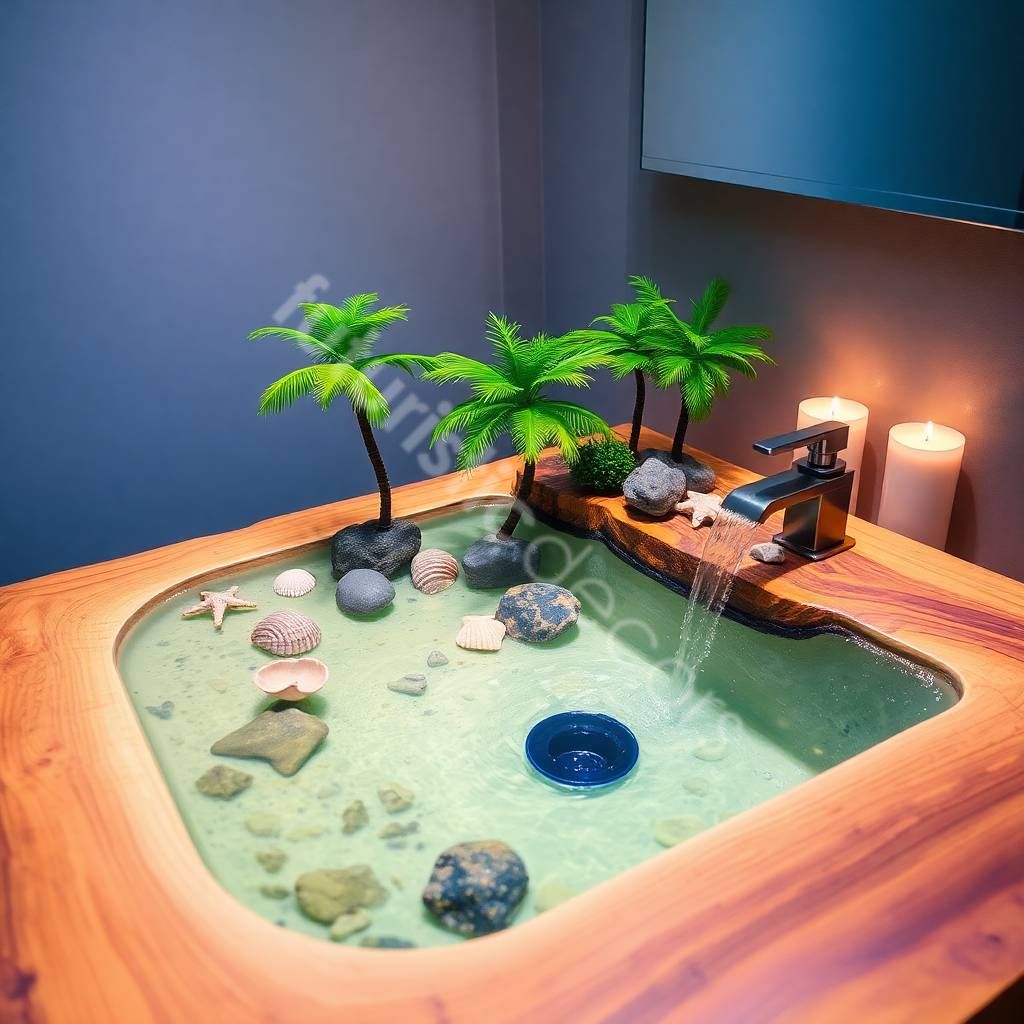
Desert Dune Concepts: Gorgeous Nature Sink
Desert designs rely on gentle curves and subtle tones:
Sand Ripple Patterns: Use a flat chisel to carve undulating horizontal lines across the basin exterior—like wind‑blown ripples etched in stone or cement.
Cactus Silhouettes: High relief spines and pads near the sink’s back provide a bold graphic contrast against smooth surfaces.
Sunset Gradients: Incorporate natural stone panels ranging from pale sandstone to terracotta, arranged to evoke a fading desert sun.
The result is a serene, minimalist sink that honors the quiet beauty of arid landscapes.
Floral and Botanical Carvings
For those drawn to blooms and greenery:
Petal‑Edge Basin: Carve the rim into overlapping petals—each gently curved to guide water inward.
Vine and Tendril Borders: Bas‑relief greenery creeps along the sink’s sides, branching toward the faucet as if searching for sunlight.
Leaf Vein Texture: Close‑up details—fine chiseling along leaf veins—introduce a microcosm of nature’s architecture.
This approach suits both stone and wooden sinks, bridging organic softness with structural form.
Wildlife Motifs: Gorgeous Nature Sink
Incorporating fauna adds dynamic energy:
River Fish Sculptures: Small fish shapes swim through carved currents around the basin floor, their forms emerging from the stone as if in motion.
Bird Silhouettes in Flight: Etch layered wings along the sink’s back, evoking swallows or herons taking wing at dawn.
Butterfly Reliefs: High relief butterflies perch on carved branches—highlighted with subtle patina for lifelike vibrancy.
Ensure animal motifs integrate seamlessly, balancing artistic expression with overall sink functionality.
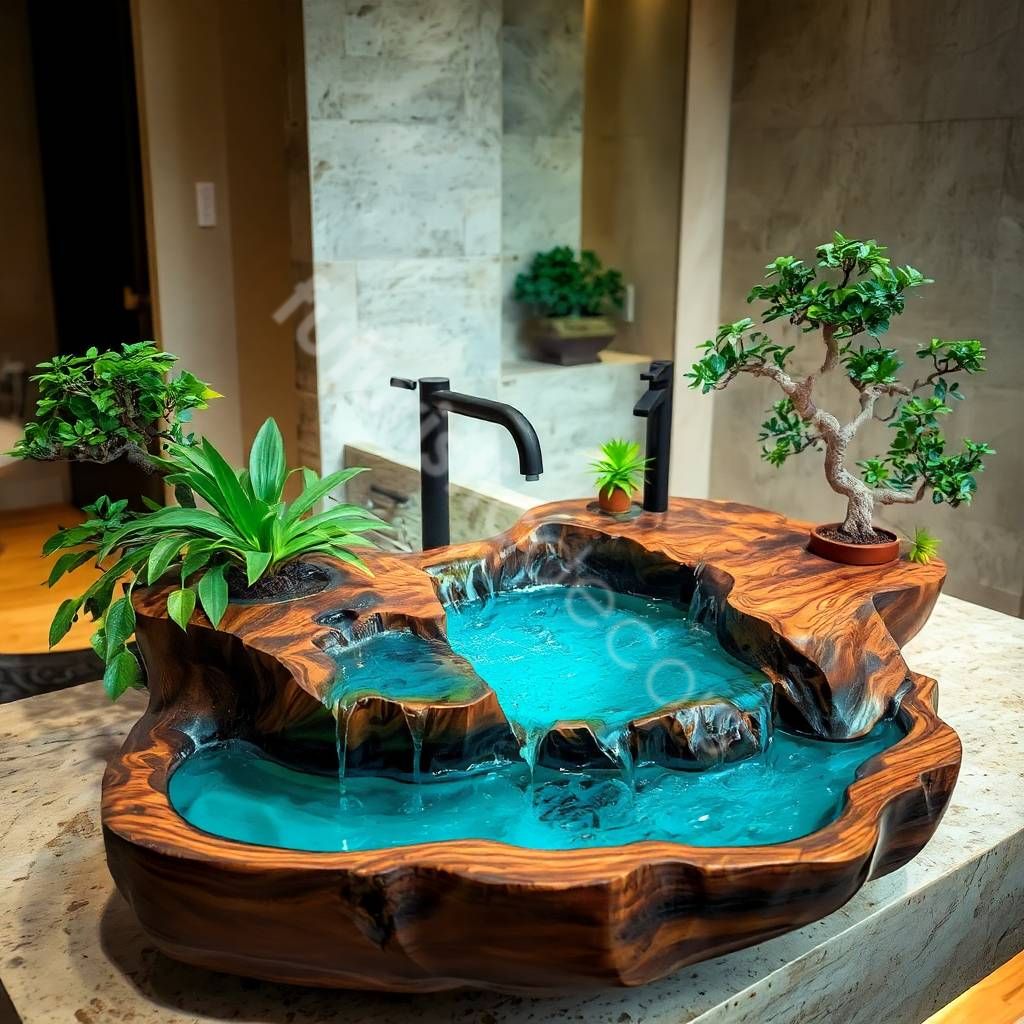
Abstract Nature Patterns: Gorgeous Nature Sink
For a more interpretive take:
Geometric Rock Facets: Facet the sink’s exterior into angular planes, reminiscent of crystalline mineral formations.
Fractal Fern Spirals: Bas‑relief spiraling motifs capture the mathematical beauty found in fern fronds and nautilus shells.
Topographic Contours: Carve concentric contour lines—like a survey map—around the basin, offering a modern homage to elevation models.
Abstract treatments lend a contemporary edge while still celebrating organic forms.
Integrating Color and Inlays
Carving alone can define form, but color and material contrasts amplify impact:
Natural Pigments: Mix iron oxide or charcoal powders with sealants to stain carved recesses—deepening shadows and drawing the eye.
Metallic Accents: Inlay thin copper or brass leaf into etched grooves to catch light and add warmth.
Resin Fill: Clear or tinted epoxy can fill carved hollows—including crushed stone or mica for sparkle—creating faux water or gemstone pools.
Use sparingly to maintain the organic feel; balance is key.
Combining Carving with Other Techniques
To expand your palette:
- Etching and Sandblasting: Fine‑scale textures—like bark patterns or granite grit—can be etched before carving begins.
- Laser Engraving: For ultra‑precise botanical outlines, consider laser‑etched stencils to guide hand carving.
- Polishing and Texturing: Contrast honed, matte carved areas with polished stone surfaces for dramatic interplay of shine and shadow.
Collaborate with artisans who can integrate traditional craft with modern technology.
Link to buy similar products: Click here
Selecting Sink Shapes and Forms
Beyond carving, sink geometry influences overall effect:
- Organic Basin Edges: Undulating rims reflect natural shorelines or cliff faces, guiding water flow over carved spillways.
- Asymmetrical Layouts: Offset basins create interest and allow larger carved scenes on one side.
- Double‑Basin Designs: Pair complementary carvings—like day and night sky scenes—across two basins for a diptych effect.
Ensure shape and carving complement each other, avoiding overly complex layouts that hinder cleaning.
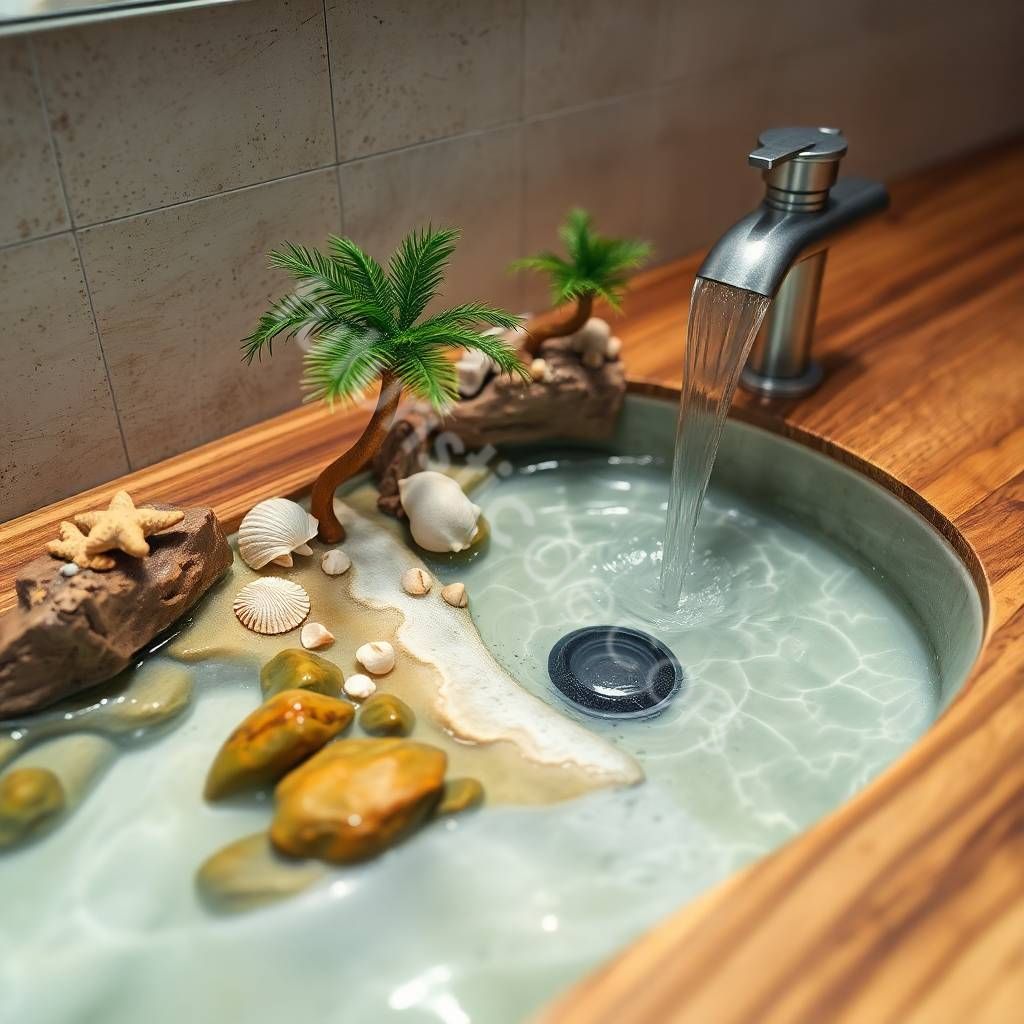
Pairing Your Sink with Countertops and Vanities
A gorgeous nature sink should harmonize with its surroundings:
Wood‑Slab Vanities: Live edge wooden counters echo carved organic lines and enhance warmth.
Stone Slabs with Minimal Veining: Choose calmer backgrounds for intricate carvings to stand out without competing patterns.
Floating Consoles: Suspended vanities allow light to accentuate carved shadows beneath the sink.
Finish choices—oil, lacquer, or matte seal—affect how carving textures appear and feel.
Practical Considerations: Durability and Maintenance
Artistry must meet everyday use:
Sealing and Waterproofing: Proper sealants prevent staining and moisture penetration; re‑seal carved areas annually for wood sinks.
Cleaning Tools: Avoid abrasive cleaners and stiff brushes that can wear down carved relief. Opt for gentle, pH‑neutral detergents.
Edge Protection: Rounded or beveled carved edges resist chipping compared to sharp undercut features.
Clear maintenance guidelines help preserve your gorgeous nature sink for decades.
Installation Tips: Gorgeous Nature Sink
Professional installation ensures structural integrity:
Support and Weight Distribution: Stone sinks can weigh hundreds of pounds; ensure cabinetry or mounting frames accommodate load.
Drain and Overflow Integration: Plan carving around drain placement—consider decorative drain covers that blend with the theme.
Access for Plumbing: Design carved panels to allow easy removal of traps and hoses for future service.
Work with fabricators experienced in custom sinks to avoid costly retrofits.
Enhancing with Lighting and Accessories
Highlight carving details with strategic lighting:
Under‑cabinet LED Strips: Warm LEDs cast soft washes across carved contours, accentuating depth.
Pendant Fixtures: Position overhanging fixtures to cast carved shadow patterns on the countertop.
Themed Hardware: Faucets with leaf‑shaped handles or bronze spigots that resemble tree branches enhance cohesion.
Even simple accessories—hand towels in nature prints, soap dishes made from river rock—reinforce the immersive feel.
Real‑World Case Studies: Gorgeous Nature Sink
Mountain Retreat Bath: In Colorado, a hand‑carved marble sink features high relief peaks and a tiny inlaid silver stream. At dawn, natural light glints off carved snowcaps, creating a shifting play of shadows.
Coastal Cottage Renovation: On Nantucket, an engineered quartz sink bears bas‑relief shells and starfish, with tinted resin “tide pools.” Homeowners credit the sink with sparking conversations and daily moments of coastal calm.
Urban Forest Loft: In Portland, a walnut sink displays a carved canopy of Douglas fir limbs overhead. Integrated strip lighting hides among carved branches, illuminating the sink with a dappled woodland glow.
Each project underscores how deeply personalized carving transforms functional fixtures.
DIY vs. Professional Carving: Gorgeous Nature Sink
While adventurous DIYers may tackle small bas‑relief details, complex high relief or intimate inlays demand expertise:
DIY Pros: Basic tools—chisels, sandpaper, rotary bits—can handle simple ripple patterns or petal edges in softer materials like wood or micro‑cement.
Professional Artisans: Master carvers bring years of experience in tool technique and vision translation. Commissioning a professional ensures precision, especially in hard stones or large‑scale designs.
Budget accordingly and be realistic about your skill level to avoid irreversible errors.
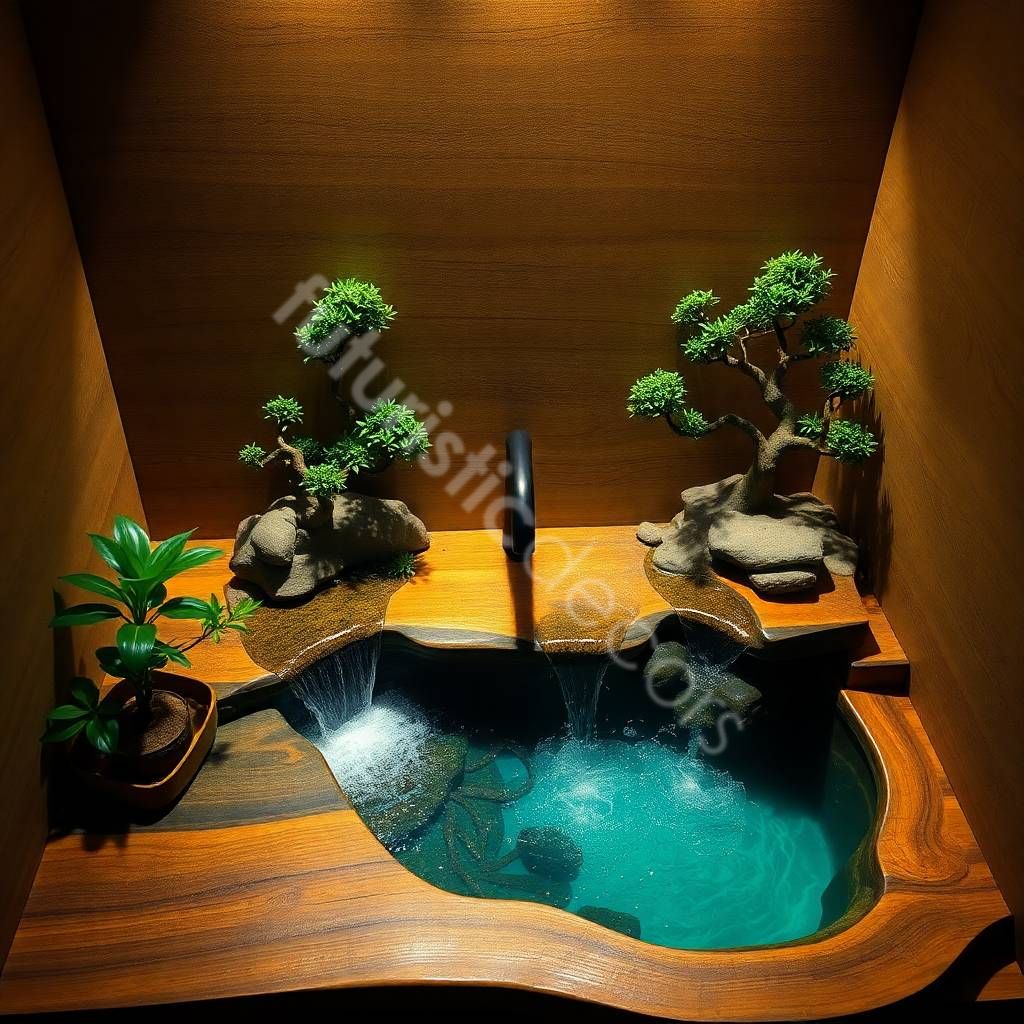
Budgeting Your Carving Project
Costs vary widely based on material, complexity, and artisan rates:
- Material Expenses: Natural stone: $500–$2,000+; engineered quartz: $400–$1,200; exotic woods: $300–$1,000.
- Labor Rates: Carving fees range from $50–$150 per hour. A medium‑complexity sink may require 20–40 hours of work.
- Additional Costs: Sealants, inlays, specialized hardware, and installation fees.
Plan a detailed quote—outline desired themes, materials, and finishes—to compare proposals from multiple fabricators.
Sustainability and Eco‑Friendly Practices
For environmentally conscious homeowners:
- Reclaimed Materials: Salvaged stone or reclaimed wood reduce new quarrying or harvesting.
- Low‑VOC Sealants: Choose water‑based, low volatile organic compound sealers to minimize harmful emissions.
- Local Artisans: Sourcing locally cuts down on transportation impacts and supports community craftsmen.
A gorgeous nature sink can not only reflect personal landscapes but also honor the planet’s well‑being.
From Concept to Completion: The Customization Process
- Conceptualization: Gather inspiration images and sketches; define your primary landscape theme.
- Material Selection: Work with your fabricator to test samples and finalize choices.
- Design Approval: Review preliminary renderings or scale models; refine carving depth and placement.
- Carving and Inlay: Skilled artisans perform the carving, color integration, and sealant application.
- Installation: Coordinate plumbing rough‑in, support mounting, and finishing touches.
- Maintenance Plan: Receive guidelines on cleaning and annual re‑sealing to ensure longevity.
Clear communication at each step guarantees a result that matches—and often exceeds—your vision.
Collaborating with Artisans and Designers
Finding the right partners is crucial:
Portfolio Review: Examine previous carved sink projects to assess style compatibility.
Technical Expertise: Ensure they understand material properties, carving tolerances, and plumbing integration.
Communication Style: A successful collaboration requires responsiveness and openness to feedback.
A shared vision and mutual respect foster both creativity and technical excellence.
Conclusion: “Gorgeous Nature Sinks”
A gorgeous nature sink transcends its utilitarian roots, emerging as a work of art that celebrates the natural world and personal narrative. From the first spark of inspiration to the final polish, custom carving empowers homeowners to infuse their bathrooms with mountain majesty, forest serenity, oceanic wonder, or desert stillness. By choosing the right materials, embracing thoughtful carving techniques, and collaborating with skilled artisans, you can craft a sink that serves as both functional centerpiece and soulful reflection of your favorite landscapes.
Whether you’re drawn to the sharp peaks of alpine heights, the gentle ripples of ocean tide, or the silent dunes of desert expanses, custom carving unlocks boundless possibilities. Invest in design that resonates with your personal story—transform your daily routines into moments of awe and connection with a truly gorgeous nature sink.


